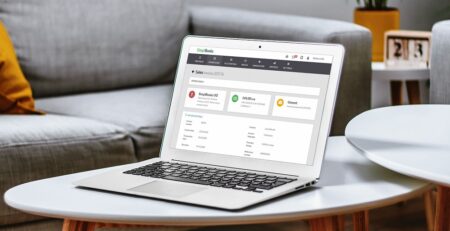Invoicing travel expenses to the customer is completely rule-free (0)
Charging travel expenses to a customer and deciding how much to charge is entirely up to the entrepreneur. Tax-free allowances defined by the tax authority have nothing to do with this. In other words, the travel costs billed to a customer and the travel reimbursements an entrepreneur pays to themselves (or to their employee) are two completely separate matters. The entrepreneur can decide whether to bill, for example, mileage separately from the customer or whether those costs are included in the hourly rate.

It all starts with the agreement
Travel expenses can always be billed from a customer, as long as this has been agreed upon. If the work is performed at the customer’s premises or at a location specified by the customer, some form of travel will be required—and that creates costs, which can then be billed. These costs can be included in the actual service price, but often it is simpler to just add them as a separate line on the invoice. Travel expenses billed to a customer may include daily allowances, accommodation costs, compensation for travel time, or mileage allowances, but in practice invoices most often only show mileage costs.
How much?
No one sets a specific limit on how much an entrepreneur can bill for travel expenses. It is entirely at the entrepreneur’s discretion. Of course, a sense of reason is useful—for instance, a rate of ten euros per kilometer would likely scare customers away. In 2025, the official mileage allowance defined by the Finnish Tax Administration is 0.59€ per kilometer and the full daily allowance is 53€. These figures can be used as a reference point. In particular, if the entrepreneur pays themselves (or an employee) mileage allowances or daily allowances, it makes sense to bill the customer at least according to these official amounts. Charging less than that will inevitably leave the entrepreneur at a loss.
Actual costs
If one has the time and interest, mileage can also be billed based on actual costs. Calculating the actual costs requires a bit of math and consideration.
EXAMPLE
- The entrepreneur mainly works at the customer’s place and invoices the customer for the kilometers separately.
- The annual costs of the car are rounded to 12 700 euros.
- The value of the car is 45 000 euros and its value decreases by 15% per year (6 750 euros).
- The taxes and insurance for the car total 2 550 euros per year.
- The repair and maintenance costs are 3 000 euros per year.
- The tires are replaced every four years and cost 1 600 euros, so the annual tire costs are 400 euros.
- The fuel costs of the car are 5 400 euros per year (with fuel at 1.80 euros/liter).
- The car is driven 30 000 kilometers
- The car’s consumption is 10 liters per 100 kilometers
The entrepreneur’s car costs, including fuel, are 18 100 euros per year. In this case, the price per kilometer will be 0.60 euros. The entrepreneur is liable for VAT, so he adds 25.5% VAT to the price per kilometer, making the price including VAT 0.75 euros/kilometer.
VAT on travel expenses billed to customers
When a company invoices a customer for travel expenses, it is a normal sales transaction – and, if the company is registered for VAT, VAT must also be added to the travel expenses. If not, then VAT does not need to be added to travel expenses. The VAT rate applied depends on the entrepreneur’s main service.
EXAMPLE
- Company A is VAT-registered and provides electrical installation services to 25.5% VAT, so it’s travel expenses are also billed with 25,5% VAT.
- Company B operates under VAT-exempt social care services and makes home visits to customers. Since company’s main service is VAT-exempt, no VAT is added to the travel expenses it’s bills to his clients either.
Billing travel expenses to customers is very much like the Wild West—everyone does it in the way they find best. In the end, billing travel expenses is just a normal sales transaction, and the only one who decides the price is the entrepreneur themselves.
Try right away!
A more advanced and easy accounting software SimplBooks with over 10,000 active users - register an account and you can try 30 days free of charge and risk-free (no financial obligations shall arise). Or try our demo version!




Leave a Reply